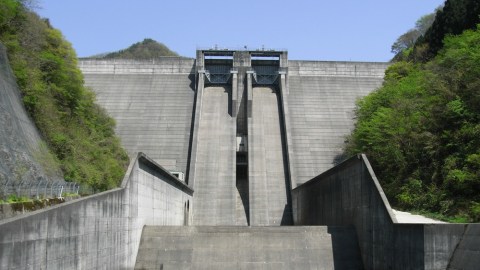“Needless Dams and Roads to Nowhere” in Japan

If you think “Sony” or “Toyota” when you think of Japan, you might just be as clueless as I’ve been about “the nation’s postwar order, which relied on colossal public works spending,” according to the New York Times.
I missed the Times story when it ran last month.
I only found it because twice in as many weeks I’ve had the good luck to talk with a woman who moved from Japan to the U.S. with her husband and daughter. She’s lived here for many years now but is still more likely to read a Japanese newspaper than an American one. Always eager for new perspectives to add to this blog, I asked her if any stories are dominating Japan’s newspapers these days. Without hesitation, she answered with one word: “dams.”
Dams, indeed.
As reporter Martin Fackler explained in the Times story, “Japan had around 60 large dams under construction in 2005, making it the world’s fourth largest dam-building nation, according to The International Journal on Hydropower and Dams, despite having a land area smaller than California’s.”
And here, again according to the Times, is why dams, especially the $5.2 billion Yamba Dam, are big news in Japan:
“The Democratic Party government of Prime Minister Yukio Hatoyama has chosen this dam as the first of 48 national government-financed dams that it wants to scrap, worth tens of billions of dollars. Canceling it is widely seen here as the first major test of the new government’s ability to deliver on campaign promises to revitalize Japan’s ailing economy by ending wasteful projects, and in the process break the grip of the central planners in Tokyo’s powerful ministries. … The Democrats, who won a landmark election over the long-ruling Liberal Democratic Party in late August, have also promised to scrap planned airports and highways. But dams are particularly symbolic because they were favored as a means of flood control and power generation by Japan’s central planners, who have dammed almost every major river in the country, some more than once.”
There’s a catch. Some rural communities, which have little else beyond these massive public works projects to sustain them, are rallying to the defense of the dams.
It’s a fascinating story, a great unexpected glimpse into a country that I, at least, thought of as the embodiment of sleek modernity — not as a place cluttered with “needless dams and roads to nowhere.”





